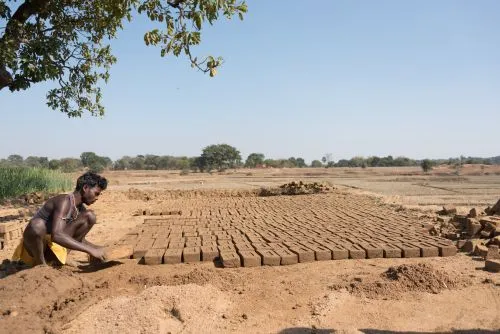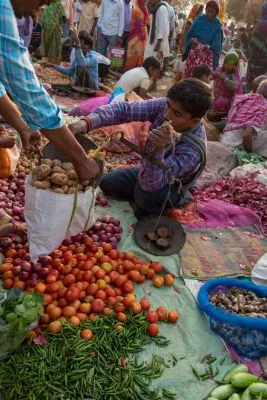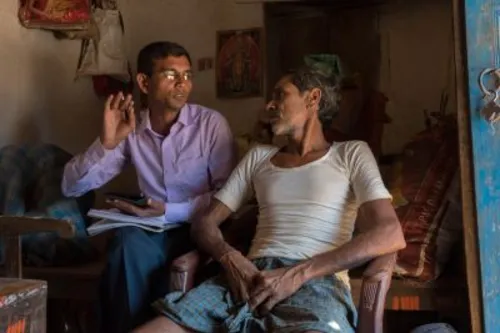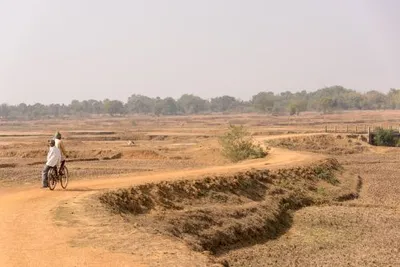Food security and dietary preferences
Interview with ZEF doctoral researcher Till Ludwig about his research in India.
Till Ludwig obtained a Master’s degree in Agricultural Economics in the USA and a Master’s degree in Rural Development in Belgium. From 2012 to 2015, he was working at Boston Consulting Group and GIZ (Deutsche Gesellschaft für Internationale Zusammenarbeit) prior to joining ZEF for his doctoral research. Starting in September 2015, he received a scholarship within ZEF’s Food Price Volatility Project to conduct his research on food and nutrition security in India. Since January 2019 he has been a ZEF Senior Researcher with ZEF’s PARI project (Program of Accompanying Research for Agricultural Innovation, see http://research4agrinnovation.org/)
Could you tell us a little bit about your background? What was your personal motivation for your doctoral research on food and nutrition security in India? And why did you decide to apply for working at ZEF?
Before pursuing my PhD, I was coordinating a GIZ project on nutrition-sensitive agriculture in Bangladesh. Food and nutrition security has always been an urgent issue in South Asia, where hundreds of millions of people are suffering from malnutrition and its consequences. The interdisciplinary approach to utilize nutrition-sensitive synergies was just starting to get prioritized by development agencies such as the Bill & Melinda Gates Foundation, the United States Agency for International Development (USAID) and the German Federal Ministry for Economic Cooperation and Development (BMZ). I was very intrigued by the potential of this approach, though a rigorous assessment of the applied approach was largely missing yet in research. I decided to study this applied research while also improving my own methodological skills. Within Germany, ZEF has a unique institutional set-up and it was a great opportunity for me to work with Professor Joachim von Braun on my research ideas.

Your research focuses on dietary consumption choices as effects of food production, markets and preferences. Could you elaborate how the production, distribution and consumption of food are interrelated with individual preferences regarding your research hypothesis? What are the main conclusions of your research?

Food and nutrition insecurity is often seen as an individual access problem. I work in rural areas of India, where many malnourished households are earning their income through agricultural activities. Accordingly, access is provided either through income generation or own production of foods. I test these linkages and find positive effects. Naturally, richer households can afford more foods and mostly also more diverse foods. Also, production of foods either in fields or in homestead gardens can contribute to a higher food and nutrition security. However, markets tend to have a stronger effect. Better and more diverse diets can be achieved when market places allow people to sell their own produce and purchase an array of alternative foods. I found this effect to be significant not only at the household-level, but also at the district-level.
But the challenging question is, that even if all characteristics are equal and access to food is a given, why are some individuals more food secure than others?
Thus, the second part of my doctoral research deals with the question of economic preferences shape dietary choices. Individuals seldom act as a utility maximizing, super rational agent. Risk preferences, patience or altruism influence our behavior. Research on food and nutrition security has vastly ignored this. I benefited very much from a research stay at the University of California in Berkeley, USA, to develop the theoretical frame for linking behavioral economics and food choices. I played hypothetical games with respondents in rural India to elicit their preferences. The empirical analysis confirmed the initial intuition: preferences influence consumption choices. Risk preference tends to have a positive effect on dietary decisions. More importantly, altruistic behavior particularly of the household head tends to improve the food and nutrition security within the household. I am most excited about these results from my PhD research.
You conducted your “field research” in India. What were the main challenges, obstacles, but also striking experiences, surprising encounters?
Initially I was supposed to collect my research data in Bangladesh. Due to the terrorist attacks in July 2016 and the security concerns I had to shift my focus quickly to East India. Eventually, conducting research in India turned out to be a great and successful opportunity, but it required much more preparatory work as I had to find local research partners, create a network and prepare the logistics in an environment that was unknown to me. Once I could finally start the data collection in January 2017, it was very challenging for me to solve all the small problems that occurred. I covered around 120 villages and each village is a small microcosm of power structures, cultural specificities and own priorities. Each time I had to figure out who was the influential person, whose backing was needed, potential politicians that wanted to be informed and – in some cases – security concerns that needed to be dealt with for the safety of my enumerators. Being a foreigner sometimes posed problems, particularly in politically sensitive areas. Luckily, I received very strong support from the University of Kolkata and the local NGOs I was partnering with. GIZ and Welthungerhilfe also helped a lot.
In your abstract you write: “The results can guide interventions that aim for improving the nutrition of vulnerable groups.” Has your research yielded any results yet on how the situation of the poor in Bengal could be relieved? Are there specific policies you would advise the governments and policy-makers of India to implement?
For project delivery by local NGOs or development agencies, it is of utmost importance to identify the vulnerable villages and households. India has a very scattered rural area, hunger pockets exist next to well-nourished areas. The data collection helped the local NGOs, Welthungerhilfe and GIZ to target the households in need and to monitor their activities. Each PhD research can help to add a little piece to the understanding of which mechanisms are effective in solving a certain problem. In this sense, in line with existing literature I could show that diversified production, market integration and certain preferences are good drivers for dietary diversification, which is a basic necessity for micro-nutrient nutrition.

In any case, I believe that intersectoral cooperation and the consideration of the complex environment has to be the starting point for policy and program initiatives to sustainably tackle food and nutrition insecurity. The time of unidimensional policy approaches is definitely over.

You are an ambitious photographer and you have contributed to the ZEF photo exhibition “Inside India”. As we live in a very visual culture, what could be the role of photography in research and beyond? What role does photography play for you and your research?
I would argue that visual influence is not culturally specific, but that almost every individual is emotionally most affected by images. We are facing the problem of graphical overconsumption. It is hard to avoid the flood of visual narcissism and voyeurism. Often this is an escape from reality. I believe that a documentary approach of photography that reflects real life in an aesthetically pleasing yet honest way can oppose the gimmicky social media approach. This helps people to better understand the situations in parts of the world they have never visited, and as such it helps to put my research results into perspective.
Researching food and nutrition issues, I assume you have gotten some insights into local cuisines. Do you have a favorite dish?
Puchka is a street snack that is widely known in India, but best in Kolkata. It is a small bowl of deep fried bread that is filled with a mix of potato, gram and seasoned water. The snack is often consumed in the evening and families do an evening walk to their preferred Puchka stall to have a nice socializing snack. I love it!
The interview was conducted by Andreas Haller, ZEF.

